SLV Table lamps
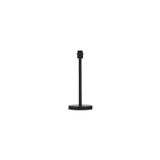

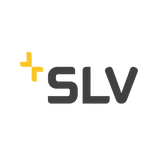












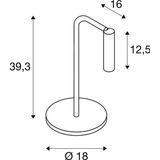
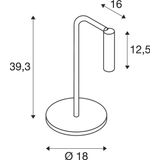
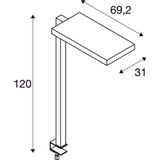




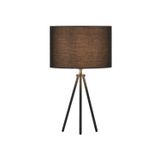
slv table lamps range and context
Table models from SLV cover desks, reception counters, bedside tops, and lounge side tables where controlled glare, stable color, and tidy wiring matter. Power is typically 220–240 V, 50/60 Hz via plug-in PSU or in-base driver; selected models run on 24 V from shared low-voltage rails in joinery. Output classes sit around 300–1 200 lm with dim curves suited to task and ambience. Color packages span 2700/3000/3500/4000 K; CRI 80 for back-of-house, CRI 90/95 for hospitality, retail consultation points, and brand corners. Binning ≤3 SDCM keeps multi-unit vignettes visually consistent.
slv desk lamps task illumination and ergonomics
Articulated arms, 3-axis heads, and counterweighted joints put the beam where work happens without shading the page. Common beams are 30–60° with cut-off that hides the bright source from seated eyes. For VDT areas, specify low-glare optics and a desk plane target of ~300–500 lx with local control. USB-C or Qi pads on selected bases provide device power without extra cabling; cable exits are grommeted to protect finishes on reception counters.
Product range and series overview
Families split into task heads with high center intensity, diffuse globes for general ambience, and hybrid bedside units combining reading and night-light modes. Finish sets (white/black/aluminum/bronze) match SLV ceiling and wall palettes so scenes read coherent. Bases include felted options for hardwoods, clamp kits for narrow tops, and grommet-post variants where theft resistance or cable hygiene is required. Emergency hospitality layouts often pair a compact task head with a soft-glow night channel for safe egress.
slv decorative table lights finishes and optical control
Decorative pieces use opal glass, ribbed acrylic, or micro-prismatic caps to avoid sparkle in low rooms. For premium counters, metallic shades and inner diffusers hold luminance below ~1 000 cd/m² at common viewing angles. Warm-dim engines (e.g., 3000→1800 K) are available on selected lines; where a constant CCT is preferred, use 2700–3000 K with CRI ≥90 to keep materials honest in lounges and guestrooms. IP20 is standard; specify IP44 rated bodies only when the lamp sits near washpoints or housekeeping splash zones.
slv led desk luminaires technical specifications and standards
Electrical: PF ≥0.90 typical, THD ≤10–15 % on pro drivers. Dimming: on-head step, rotary, or touch with memory; DALI-2 or 1–10 V on joinery-integrated variants; phase-cut only when lamps use inline mains drivers. Flicker: office-suitable families meet PstLM ≤1.0 and SVM ≤0.4. Lifetime: LM-80 sources with TM-21 projections; expect L80 35–60k h at Ta 25 °C when Tc is respected. Operating window commonly −10…+35 °C for portable units. Safety/EMC: EN/IEC 60598-1/-2-4 for portable luminaires, EN 62031 for LED modules, EN 61347 for controlgear, EN 55015/EN 61547 and EN 61000-3-2/-3-3 for mains quality. Touch surfaces meet glow-wire where required in hospitality joinery.
Applications and compatibility
Front desks: 3000–3500 K task heads with tight beams keep counters bright and background calm. Guest rooms: bedside pairs with independent left/right control and low-level night channels reduce trips during housekeeping. Retail consultation: 3500–4000 K, CRI 90+ preserves fabric and cosmetic tones. Libraries and study rooms: broad 60° heads with glare baffles maintain uniformity across A3 spreads. Where battery use or frequent re-layout is expected, specify slv portable lighting with published runtimes and swapable packs.
Integration with other SLV products
Coordinate tabletops with SLV wall sconces and ceiling drums on a single control narrative so scenes are predictable. Joinery-integrated heads share drivers with linear coves from SLV light ribbon hose strip; publish voltage-drop and minimum dim percent together. In open offices, pair task heads with low-UGR recessed downlights; where legacy cut-outs are irregular, SLV frames regularize apertures so the whole room reads consistent.
Selection criteria for B2B clients
Start with the task plane: target lux, page size, and viewing angles. Choose beam and CCT/CRI accordingly; hold two lumen nodes across a floorplate to handle bright and dark zones without deep dimming. Verify base style (weighted, clamp, grommet) versus furniture drawings; confirm cable exit and strain relief to protect finishes. For hotel specs, set maximum surface temperature on touch points and confirm switch logic for guests. If the brief calls for slv indoor table lighting, align envelope sizes and finishes across the sightline, then publish inrush (if mains-dimmable), PF/THD, and driver topology in the panel schedule.
Technical and operational notes
Keep 10–15 mm air around in-base drivers; crowding raises Tc and erodes life claims. On grouped desks, avoid mixed dimming topologies on the same circuit—DALI-2 for fleets, phase-cut only for stand-alone rooms. Where reading clarity is critical, specify CRI 90 with R9>50 and a 3500–4000 K head; that is the sweet spot for slv reading lamps in mixed paper/screen tasks.
Advantages of working with Bankoflamps
You receive individual B2B pricing and a dedicated account manager who maps optics, lumen nodes, dimming method, bases, and finishes to your room data sheets and furniture schedules. Our portal shows live EU stock by warehouse; quotes typically return in about an hour with EAN/MPN, photometry, PF/THD, inrush, Tc limits, cable lengths, and accessory codes so coordination doesn’t drift. Orders go in by manufacturer code with downloadable, always up-to-date price lists and validity windows. We provide lead-time tracking and order status, purchase-history analytics, and post-payment up to 30 days for trusted clients. Shipments consolidate by zone to cut freight and on-site sorting, and we actively support projects in France, the Baltics, Germany, Spain, Italy, Belgium, and the Netherlands.